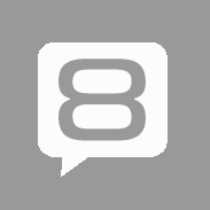Landscape Architecture for Landscape Architects › Forums › PORTFOLIO & RESUME › Scale Drawings in Portfolio
- This topic has 1 reply, 9 voices, and was last updated 13 years, 7 months ago by
 Jason T. Radice.
Jason T. Radice.
-
AuthorPosts
-
May 7, 2012 at 6:34 am #157575
 MGParticipant
MGParticipantOk, so I am just starting to work on getting all of my projects together in InDesign for my first portfolio. I am running across some obstacles.
First off, the margins. Should there be margins? Or is that a design decision I should make on my own? I’ve decided to do Landscape layout 8.5 x 11.
Secondly,regarding the scale drawings. My site plans and sections are at a larger scale like 1″ = 40′ or 1″= 16′. These drawings are HUGE and would cover a whole 36′ x 48′ board. Should I just place these huge drawings into InDesign and when I convert the portfolio into .pdf I should be fine? I have already saved each of these images that I am placing into InDesign as a .pdf file that has been compressed to the smallest size possible, but each file size is still fairly large. About 2-5 mb per image that I am placing.
Thirdly, placing the drawings into InDesign in a 8.5 x 11 will obviously change the scale of the drawing. So is that ok? For example, the drawing of a site plan will state that the image is 1″=16′ although its not….will that be acceptable?
I know these questions are somewhat silly, but I am an amateur at this and trying to tackle this portfolio. It’s been such a challenge for me as I keep running into problems. Thanks! 🙂
May 7, 2012 at 7:49 am #157597 Jason T. RadiceParticipant
Jason T. RadiceParticipantYou will manually scale them in InDesign when you place them in the document, provided you have the document size set correctly.You can right click on them an select “fit to frame or something to that effect. Just do not insert the PDFs into a PDF document, because they will insert at full scale.. My brochure and portfolio are full bleed (no margins for the background), but I adhere to a margin for image and text and image placement to ensure it does not get cut off printing on any printer, including a potential employer’s printer (someone may be printing them and may not set it to ‘fit to page”). They may be large, as sometimes, parts of the PDF can be converted to raster images.
To get them smaller, you can PRINT them to the PDF rather than export them. This gets rid of all the extraneous information that can accompany an exported PDF. Once printed, you can also select “Reduce File Size” in Acrobat and select a higher release of PDF, which usually makes the files quite a bit smaller. You may lose some functionality and clarity, but for e-mailing, its fine. Just keep a separate large file for printing and to send if requested.
Don’t worry about the scale of the drawing. No one is going to build anything off of your portfolio, and it is generally understood that drawings in a portfolio are not to scale.
May 7, 2012 at 4:32 pm #157596 Tosh KParticipant
Tosh KParticipantA graphic scale wouldn’t hurt.
May 7, 2012 at 4:49 pm #157595Rooney
ParticipantWhether or not you have margins probably depends on the style of portfolio you want it to be. Personally I leave them off and place images to edge. If you do this use the crop marks and bleed setting when publishing from indesign. Then print on an oversize a4 and crop it down, this should avoid the printer cutting of the edges of your work.
I would also add scalebars to the original drawing, that way you get some sense of the proportionality of the drawing even if its not to scale.
If its a single ‘carry-in copy’ you’re producing it might be worthwhile trying to get a ‘book’ style folio (Pina Zangaro do good ones!) This will allow you to run artwork (particularly sections) across two adjacent pages to keep the the drawing at a large enough scale to still be readable.
May 7, 2012 at 7:38 pm #157594 MGParticipant
MGParticipantThanks for the help Jason!
I tried the “fit to frame”and it worked!
Where do I go for the “print to pdf”? I remember doing that in school, but I am using a MacBook now with the latest Adobe Suite cs5. The options are somewhat different. I just went to “save as” when I converted the individual drawings into pdf. But instead, you’re telling me to go to “print” –>”print settings” –>”save as pdf” or “save as adobe pdf”? I am guessing its “save as adobe pdf” because the other option takes me the the same saving screen like last time. Also, is this the step I take in Indesign or in Photoshop/Illustrator before placing them into InDesign? Sorry, but internet communication can be confusing. Personally, I wish I had someone in person to help me with this stuff as things can get done faster.
Ya, I feel much better knowing the scale is not an issue. That would have been a lot of work!
May 7, 2012 at 7:44 pm #157593 MGParticipant
MGParticipantThanks Rooney!
Do I just go to “Marks and Bleeds” when you are trying to save as Adobe pdf? You just check mark them, right?
Ya, I might consider doing scale marks and I’ll check out Pina Zangaro!
May 7, 2012 at 9:06 pm #157592Kevin Ho
ParticipantIn this digital day and age, it is so easy to copy and paste without knowing the original scale of the drawing. I would and always strive to include a graphic scale to drawings. Too often I find out there has been some enlargement/reduction to the original and the graphic is the one to follow. Very important and it shows your professionalism.
May 7, 2012 at 9:40 pm #157591 Chris WhittedParticipant
Chris WhittedParticipantIf you did/do not use graphical scales, one way to handle the scale thing is with a caption. If most of your text on a given page is describing the media or drawing itself as opposed to the project, you can include it in there. Otherwise a little caption somewhere on the page that says something like ‘Original 36×48 marker on pressboard’ or ‘AutoCAD for 24×36 sheet’ or ‘Detail of 18×20 color pencil rendering’ will give the viewer an indication of how much reduction has been done and if they’re looking at a full layout or just a part of a larger work.
Typically if I’m inserting an image file only I’ll create one targeted for the print size rather than linking in the full original and letting Adobe do the downsampling and compression. In some instances, particularly with text, I find creating a reduced image file from an original Illustrator or Indesign file reduces the quality too much so I create a pdf and link to that as you have done, then scale it down to whatever size it needs to be on the page. That way when I scale it down the linework is still vector (depending on how you created or reduced the file size of the pdf – hence Jason’s warning about rasterizing) and stays crisp. The thing to keep in mind is whether your original work, or at least the important part to convey, is vector or raster. Vector scales easily and sharply, while raster does not and has to be manually sharpened.
My workflow is built around keeping the smallest, simplest files from the ground up to achieve the desired quality. Sometimes it involves a bit more upfront work or extra steps along the way, but that’s usually more than made up for by the size and quality of the results and the reduction in headaches of getting everything to print correctly – the first time.
May 9, 2012 at 3:37 am #157590 MGParticipant
MGParticipantOk, thanks Kevin for your feedback!
May 9, 2012 at 3:45 am #157589 MGParticipant
MGParticipantThank you Chris! You really helped me out. Ya, that’s what I’ll stick to. I am going to individually compress and downsize each image when I am converting them into pdfs. Than place them into InDesign. When I am done with the portfolio, I’ll do one final pdf conversion and downsize it further. One last question for you, when I place the pdfs into InDesign, they look pixilated and unclear. Is this normal?
May 9, 2012 at 4:08 am #157588 RobotParticipant
RobotParticipantThe pixelated look in InDesign is normal. I think that displaying images at full resolution slows the processing speed down, so the InDesign default for on-screen display is at a lower quality. You can change this if you go to Edit–>Preferences –> Display Performance. I would recommend leaving it as is, though, because displaying at a higher quality slows things down. If you want to verify exactly what your pages will look like when converted to pdf, just press Ctrl+E and export one of your pages to pdf to see how it looks.
May 9, 2012 at 4:13 am #157587 MGParticipant
MGParticipantThank you Rob! That really helps. 🙂
May 9, 2012 at 7:29 am #157586 Jason T. RadiceParticipant
Jason T. RadiceParticipantI’m not familiar with how it works with a mac, but on a PC, Acrobat installs itself as a printer, just as an inkjet or laser printer would. You go to “print” and choose “AdobePDF” where you choose your usual printer and choose your printing options. Either color or monochrome, and the printed resolution and post script options. There are presets as well, for screen, high quality print, etc. I’ve had to lower the output resolution to “screen” or 72lpi in order to fit my entire work sample brochure under the requested 2meg limit for e-mail. Saving the PDF can attach all sorts of extraneous information that is not needed for the image. Printing also collapses the PDF so it cannot be changed, and also ensures that your fonts appear correctly. Sometimes if you use an unusual font, they can be substituted unless the font info is transmitted with the document. By printing it, you are locking the text shape data with the document, so no font information is needed at all.
You can do the usual “save as pdf” in illustrator or photoshop to then insert into indesign. I generally use the “print” feature as the final step.
Most people have no clue how powerful and complicated Acrobat and PDFs are. They are great tools for publishing, if you know what you are doing. I used to do press separations with them all the time.
May 9, 2012 at 8:52 pm #157585Rooney
ParticipantHere’s a page where the steps are outlined in the first two points
http://www.sketchpad.net/cropmarks1.htm
Also make sure your artwork runs slightly over what will be the finished cropped edge, to avoid a thin white band between image and the edge of the page.
Good luck!
May 9, 2012 at 10:04 pm #157584 MGParticipant
MGParticipantThank you Rooney! The step by step will be very helpful!
-
AuthorPosts
- You must be logged in to reply to this topic.


